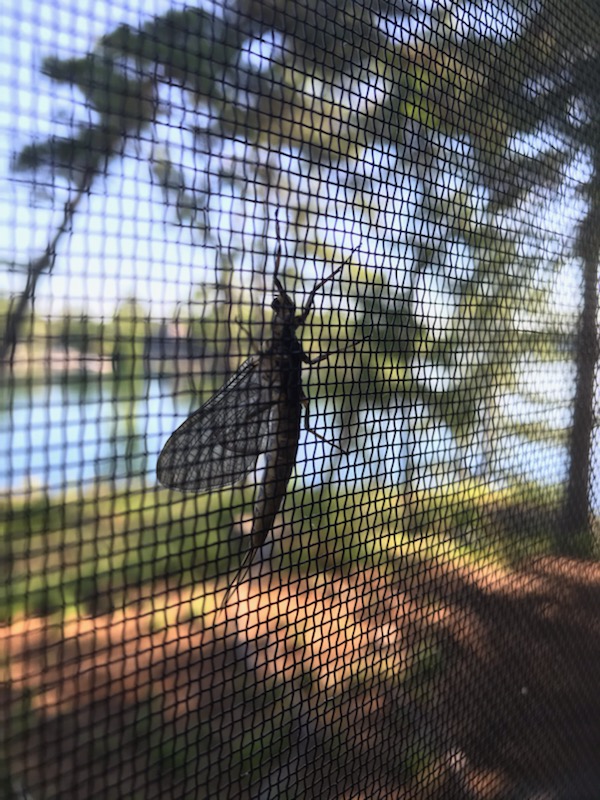Mayflies, or shadflies are hatching in great numbers. Relatives of dragonflies and damselflies, these short-lived insects belong to an order fittingly named Ephemeroptera. There are many species all over the world and in our area. They became known as mayflies in some areas because the hatch is observed in the month of May in England, and they can also be referred to as shadflies as their emergence coincides with the river running of the shad fish in some areas of North America.
What are those tiny skeletons floating on the water? Those are the exoskeletons of the nymphs that have emerged from the lake bottom and moulted into the “adolescent” winged form known as the subimago. What are those smaller, light coloured mayfly-shaped husks clinging to your screens? Those are the exoskeletons of the subimago that have moulted one final time into the mature imago. The imago is the larger and darker coloured final form that you may find littering the bottom of your boat or in a pile below your exterior lights.
Like dragonflies, mayflies live most of their lives underwater as nymphs, or naiads, and breathe through fine external gills. Their presence is indicative of good water quality. Unlike carnivorous dragonfly nymphs, most mayfly nymphs are herbivores or detritovores. They are an important part of the aquatic food chain and provide food for fish, crayfish, leeches, amphibians, and dragonfly larvae among others. The nymphs process a large quantity of organic matter and help remove pollutants by transferring the phosphates and nitrates they consume out of the water when they hatch. Hatching is dictated by water temperature, and to some extent, light intensity. When these are just right, there is a large synchronous hatch that provides an important food source for nesting birds with hungry chicks, fish, (ask any fly fisherman about this!) frogs, dragonflies, and many other animals.
Adult mayflies live just a day or two and their only goal is to reproduce. They do not feed and lack functional mouths. Males perform a courtship dance over open water that sees them climb and fall repeatedly; and the females are drawn to mate with the males in midair. Perhaps you have seen flocks of gulls wheeling and diving to feed in these swarms in the evenings? Females, that escape birds and other predators, lay their eggs on the surface of the water; and the life cycle begins again.
The ephemeral life of mayflies has inspired writers and other artists for years. Richard Wilbur pays homage to the humble mayfly in this beautiful poem.

